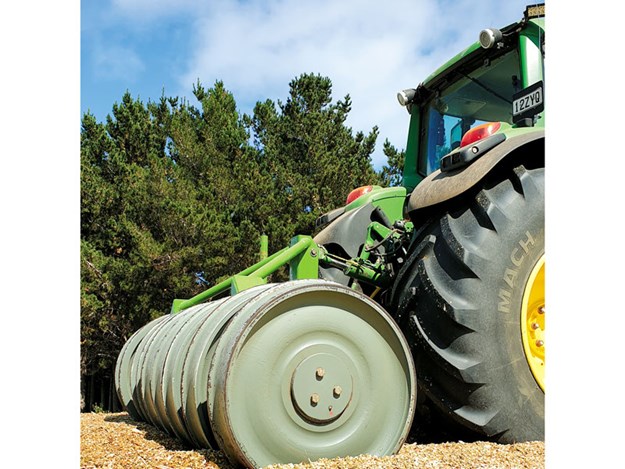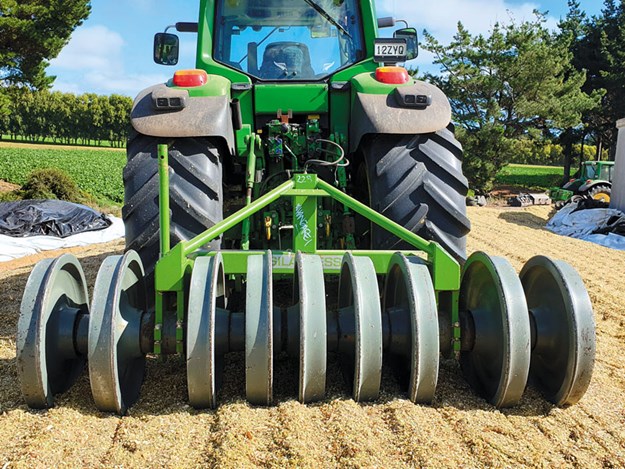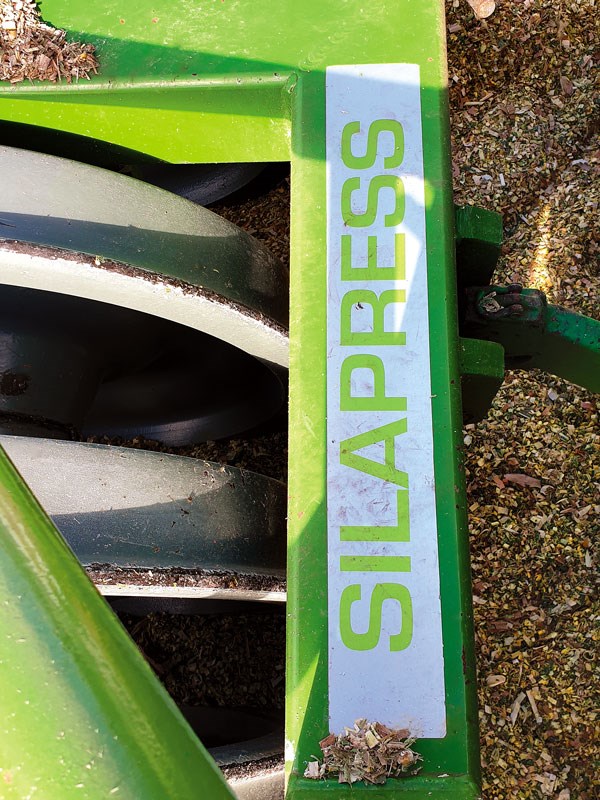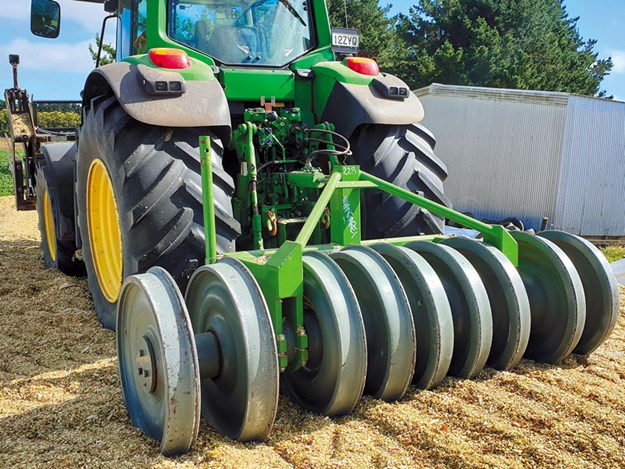Test: Silapress
The Silapress makes a weighty impression on Farm Trader reviewer Jaiden Drought
 |
|
Correct preparation and handling is key to creating quality forage
|
With autumn calving well under way, and juggling the everyday business of farming alongside maize harvesting, Jaiden Drought was keen to try new ways of maximising efficiency. Enter the Silapress from Webbline, for a full assessment to see whether it stacks up.
The way I see it, there are three key principals to creating good silage (*spoiler alert) and these revolve around its weight or more precisely compaction.
Matching forager output to stack capacity
 |
|
Being wider than the tractor makes it ideal for compacting the corners of the pit
|
As foragers become more powerful, heads are becoming bigger and trailers are also becoming more capacious. You can send all the product you like to the pit, but if the stack machine and/or driver can’t keep up, this increased harvesting capacity is all in vain. Material coming in too quickly leads to an out of control pit and poor compaction, resulting in increased spoilage and wastage – a poor result all round.
Having the right machine for the job
 |
|
The heavy box section frame keeps the wheels in check
|
As mentioned, foragers are bigger than ever before. This has seen the rise in popularity of specialised wheel loaders being used for pit work. This progression is two-fold. Firstly, the loaders are quick, powerful, and heavy; all the things you need to be a success on the stack.
 |
|
Although the weight is concentrated in a narrow point, the spreading effect is the most helpful in speeding up pit rolling
|
The second reason they are rising in popularity is that the amount of overseas workers driving machines around the country has increased dramatically in the last five years. These machines are particularly popular in the UK and Europe. These guys and gals know how to operate them, and going back to a conventional tractor and buckrake combination is seen as a backward step.
Compaction
 |
|
This area was driven over five times with the tractor and Silapress and is well spread for further rolling to keep compaction in the desired six-inch layers
|
Although this is the third pointer, this is by far the most important. From a farmer’s perspective, the first two are merely a matter for the contractor to sort out. If you don’t like their set up, there will be three more contractors willing to drive onto your farm in a heartbeat.
All you really need to care about is:
- Are there too many trailers swamping the pit driver?
- Are they spreading the material in thin layers (ideally less than six inches)?
- Are they getting sufficient time to roll these layers across the whole pit before the next trailer arrives?
The ideal result is a smooth finish, completely rolled with the tyres to create an almost ‘sealed’ appearance where the tyres don’t sink in. Throughout this article, I will focus on the third pointer, as this is really the one which is only achievable if the first two are taken care of.
Winning with weight
 |
|
The nine-wheel model weighs a staggering 3.2T, which explains why it’s so effective
|
When rolling, silage and traction are the only two times in life when weight is your friend. I don’t need to bring up the ‘try on your jeans and togs once a week during lockdown, as pjs and trackies give you a false sense of security’, although, it’s possibly more applicable during the current situation.
This is where I insert the piece about ‘not judging a book by its cover’ chestnut. I will add a disclaimer blaming my Scottish heritage for my slightly sceptical outlook on a machine, which for what you get, seems relatively pricey.
Enter the Webbline-imported Silapress, supplied by TS Contracting for our test. Although it looks basic, the manufacturer hasn’t skimped on raw materials judging by its weight and how it lurches the tractor around.
This brings me back to my spoiler – * weight: at three metres wide and 3.2 tonnes, this sucker is just raw steel and almost nothing else. I will admit I did dismiss this piece of kit initially as being too expensive. Why not just get a huge three-tonne weight block to do the same thing?
Well, in one breath, yes, but in another, this option can also be dangerous. The beauty of the Silapress is that weight can be used as your friend for compaction over a three-tonne weight.
And because it can roll, you become more daring, using it to roll sides you usually wouldn’t and build steeper faces, thanks to having the ability to climb them without somersaulting the tractor backwards.
But weight, there’s more
 |
|
Although not much to it, the weight makes it expensive through both raw materials and shipping
|
The next advantage became evident when stacking maize carted to the pit in trucks and trailers. I’m not sure what it is about truckies, but this seems to be what happens; they all load, presumably gasbag at the weigh station, and then proceed to race each other to the pit so they can stand around and gasbag some more until they tip off.
They then race back to the crop and repeat the process. This means that when you’re rolling the stack with trucks and trailers, you’re constantly swamped, and then have an hour to fill in while they race around the countryside. This is where the Silapress shines.
It means you can be pushing the material with a front-mounted implement (blade, buckrake, etc) and rolling three metres at once with the Silapress as you go up and down the pit. It also has a smoothing effect because of the weight, meaning the pit is smoother. In turn, this is safer and allows more time for rolling and less time trying to fiddle about.
Verdict
.jpg) |
|
The spreading and rolling is a dream result for keeping the pit under control between trucks
|
If I were a contractor, I would definitely buy a Silapress. No hesitation. I went from thinking ‘they are too expensive’ to ‘this thing is unreal’ in two days. In fact, I would go as far as to say (many will disagree with me) that in maize, this on a big tractor would be more effective than a loading shovel, purely because you don’t need fancy gizmos to spread the maize.
It’s like sawdust; it kind of just happens. Grass silage is different. With fine chop, the Silapress would be very good, but a loading shovel may have the advantage of being able to lift and carry more. Loader wagon silage – well my kids wonder why I have no hair and I tell them I stacked long chop wagon grass for years and it all becomes apparent to them. Enough said!
Pros
- Heavy
- Minimum parts; almost nothing to go wrong
- Because of the weight, has a smoothing effect
- Works like ‘trainer wheels’ on the edge of the pit
- Makes large stacks and buns safer
- Slows everything down, you don’t need to drive as fast, making it safer
- More driver/tractor-friendly and compacts the pit in thinner layers
Cons
- Needs a plate welded to stop water sitting in
- top link bracket
- Initial outlay
Find farm machinery for sale in NZ
Keep up to date in the industry by signing up to Farm Trader's free newsletter or liking us on Facebook

.jpg)




.jpeg)




.jpg)

.jpg)
.jpg)


